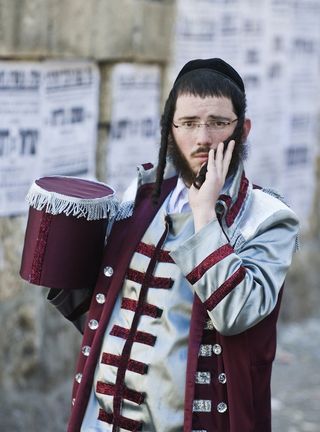Surprise: Ashkenazi Jews Are Genetically European

The origin of the Ashkenazi Jews, who come most recently from Europe, has largely been shrouded in mystery. But a new study suggests that at least their maternal lineage may derive largely from Europe.
Though the finding may seem intuitive, it contradicts the notion that European Jews mostly descend from people who left Israel and the Middle East around 2,000 years ago. Instead, a substantial proportion of the population originates from local Europeans who converted to Judaism, said study co-author Martin Richards, an archaeogeneticist at the University of Huddersfield in England.
Tangled legacy
Little is known about the history of Ashkenazi Jews before they were expelled from the Mediterranean and settled in what is now Poland around the 12th century. On average, all Ashkenazi Jews are genetically as closely related to each other as fourth or fifth cousins, said Dr. Harry Ostrer, a pathology, pediatrics and genetics professor at the Albert Einstein College of Medicine in New York and the author of "Legacy: A Genetic History of the Jewish People" (Oxford University Press, 2012).
But depending on whether the lineage gets traced through maternal or paternal DNA or through the rest of the genome, researchers got very different answers for whether Ashkenazi originally came from Europe or the Near East.
Past research found that 50 percent to 80 percent of DNA from the Ashkenazi Y chromosome, which is used to trace the male lineage, originated in the Near East, Richards said. That supported a story wherein Jews came from Israel and largely eschewed intermarriage when they settled in Europe. [The Holy Land: 7 Amazing Archaeological Finds]
But historical documents tell a slightly different tale. Based on accounts such as those of Jewish historian Flavius Josephus, by the time of the destruction of the Second Temple in A.D. 70, as many as 6 million Jews were living in the Roman Empire, but outside Israel, mainly in Italy and Southern Europe. In contrast, only about 500,000 lived in Judea, said Ostrer, who was not involved in the new study.
"The major Jewish communities were outside Judea," Ostrer told LiveScience.
Maternal DNA
Richards and his colleagues analyzed mitochondrial DNA, which is contained in the cytoplasm of the egg and passed down only from the mother, from more than 3,500 people throughout the Near East, the Caucusus and Europe, including Ashkenazi Jews.
The team found that four founders were responsible for 40 percent of Ashkenazi mitochondrial DNA, and that all of these founders originated in Europe. The majority of the remaining people could be traced to other European lineages.
All told, more than 80 percent of the maternal lineages of Ashkenazi Jews could be traced to Europe, with only a few lineages originating in the Near East.
Virtually none came from the North Caucasus, located along the border between Europe and Asia between the Black and Caspian seas.
The finding should thoroughly debunk one of the most questionable, but still tenacious, hypotheses: that most Ashkenazi Jews can trace their roots to the mysterious Khazar Kingdom that flourished during the ninth century in the region between the Byzantine Empire and the Persian Empire, Richards and Ostrer said.
The genetics suggest many of the founding Ashkenazi women were actually converts from local European populations.
"The simplest explanation was that it was mainly women who converted and they married with men who'd come from the Near East," Richards told LiveScience.
Another possibility is that Jews actively converted both men and women among local populations at this time, although researchers would need more detailed study of paternal lineages to test that hypothesis, Richards said.
Follow Tia Ghose on Twitterand Google+. Follow LiveScience @livescience, Facebook & Google+. Original article on LiveScience.
Tia is the managing editor and was previously a senior writer for Live Science. Her work has appeared in Scientific American, Wired.com and other outlets. She holds a master's degree in bioengineering from the University of Washington, a graduate certificate in science writing from UC Santa Cruz and a bachelor's degree in mechanical engineering from the University of Texas at Austin. Tia was part of a team at the Milwaukee Journal Sentinel that published the Empty Cradles series on preterm births, which won multiple awards, including the 2012 Casey Medal for Meritorious Journalism.


No comments:
Post a Comment